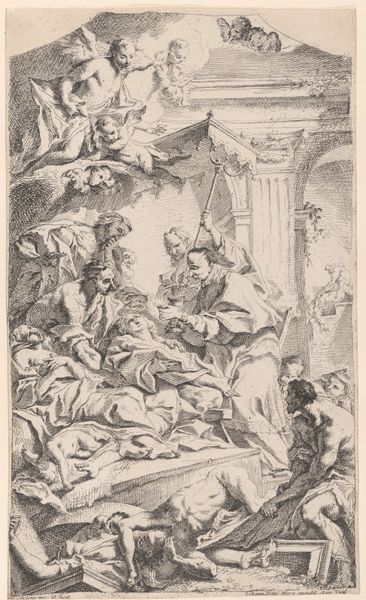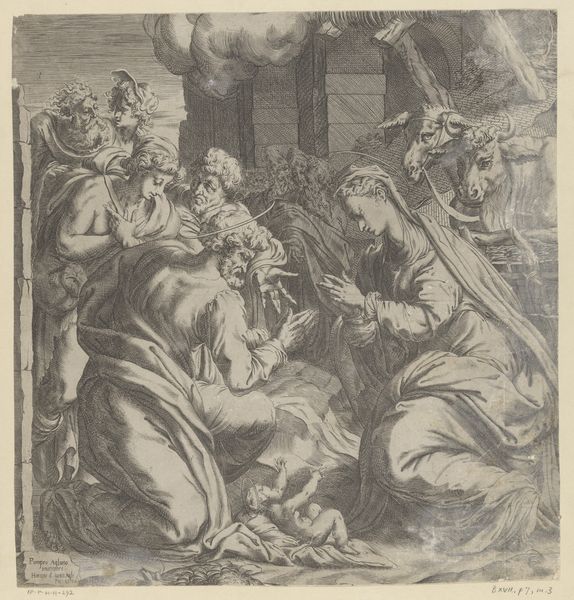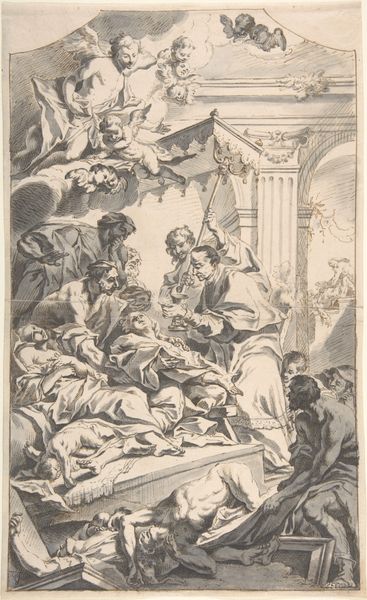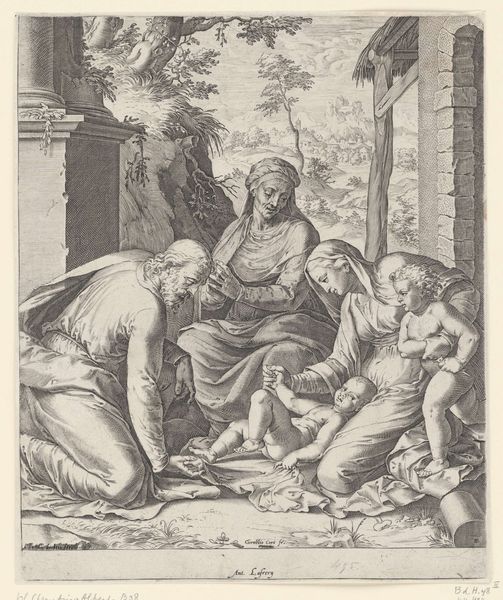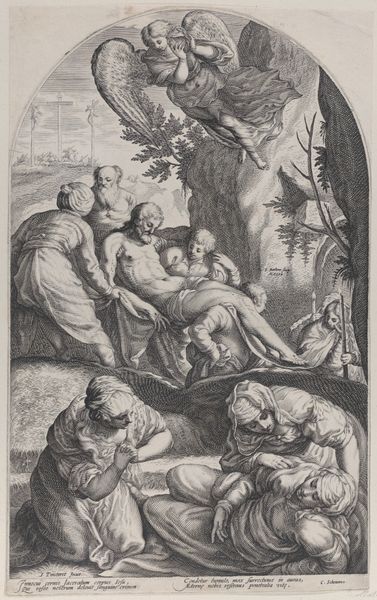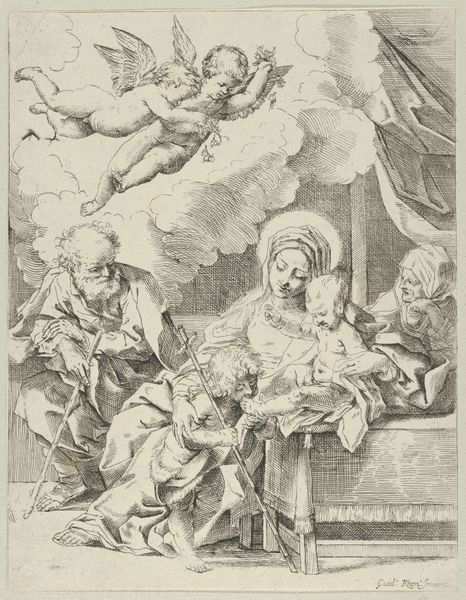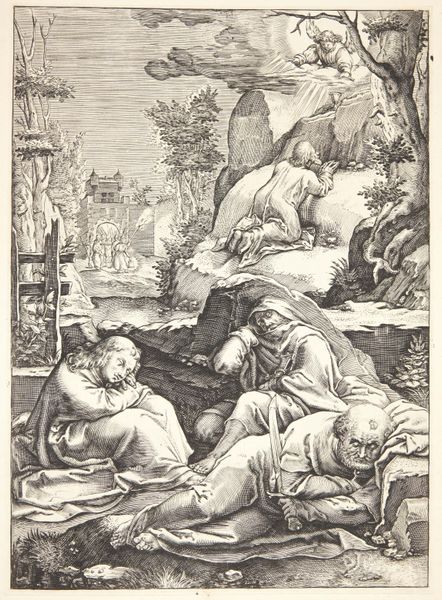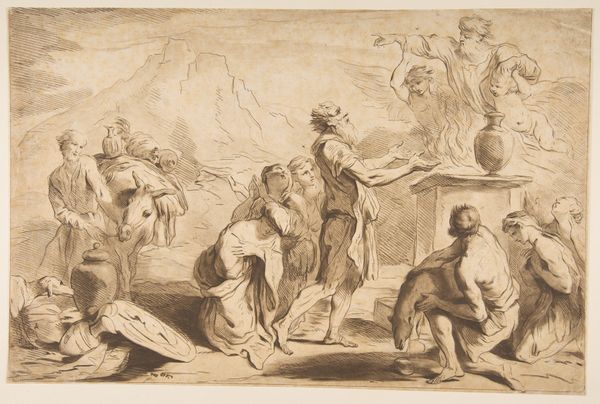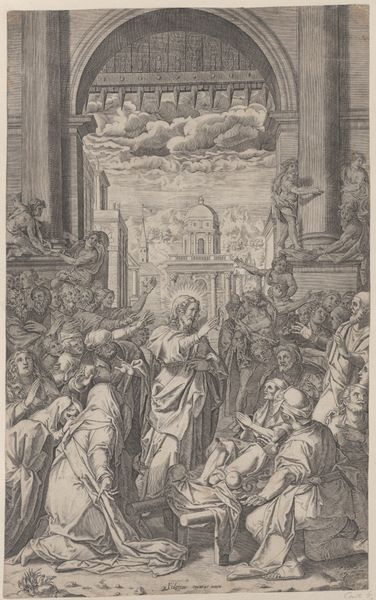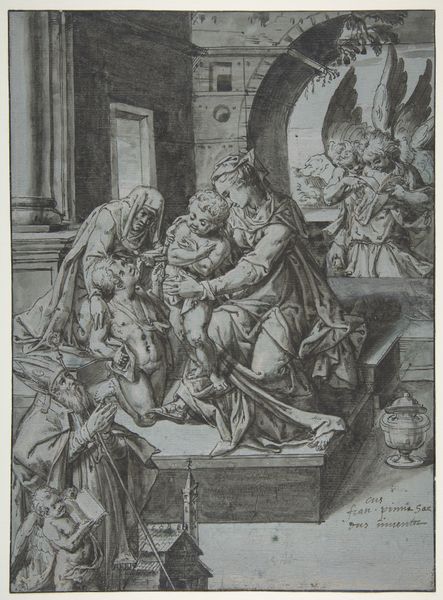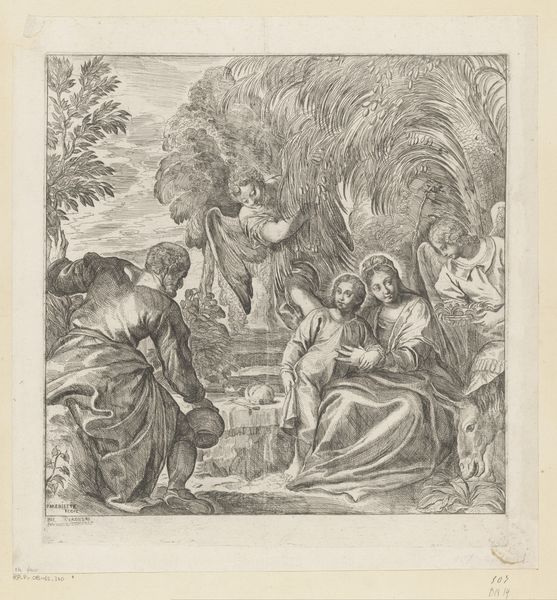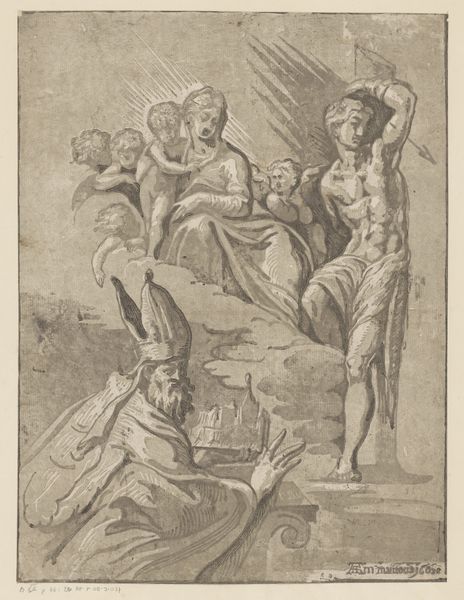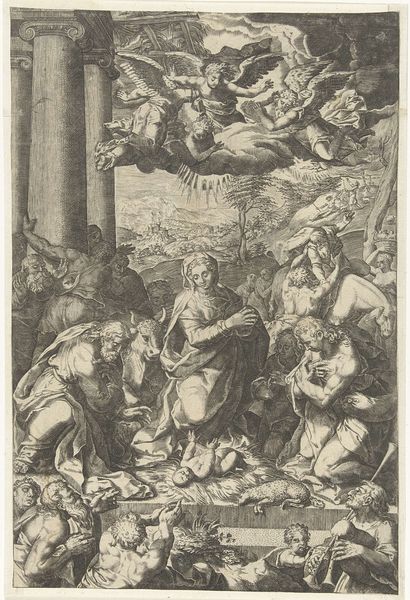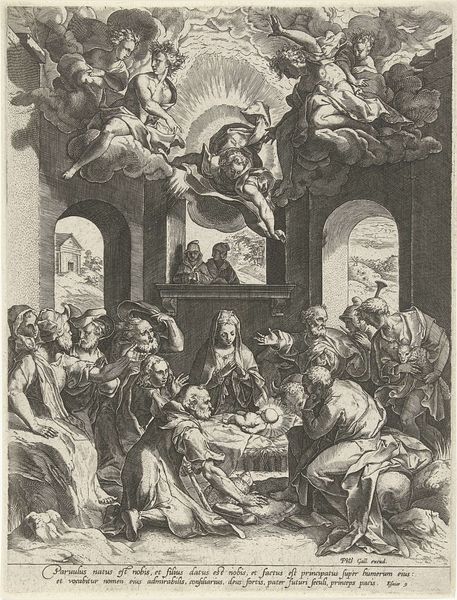
The Holy Family with angels at right and overhead 1652
0:00
0:00
drawing, print, engraving
#
drawing
# print
#
figuration
#
history-painting
#
italian-renaissance
#
engraving
Dimensions: Sheet (Trimmed): 11 7/8 × 12 9/16 in. (30.1 × 31.9 cm)
Copyright: Public Domain
Curator: We're looking at "The Holy Family with Angels at Right and Overhead," an engraving from 1652 by Giovanni Battista Beinaschi. Editor: It’s starkly beautiful. The lines are so clean, creating this dramatic interplay of light and shadow. There’s a tangible weight to the figures, despite the ethereal subject matter. Curator: Beinaschi was working within the rich tradition of Italian Renaissance art, particularly during a period marked by intense religious and political upheaval. Understanding that context shapes how we view this depiction of the Holy Family. Editor: Tell me more about that composition. Look how Joseph is partially cropped, watching over the scene. The angels framing Mary suggest that even their devotion cannot truly surround her importance. Curator: Precisely! It's important to recognize how art portrays motherhood within hierarchical structures and to acknowledge what these visuals silently reveal about contemporary views of femininity. How, for example, it simultaneously empowers yet constrains Mary. Editor: There is also this interesting interplay of divinity and naturalism. I note the stark columns and rock formations creating this duality that grounds us while inviting a space of spiritual transcendence. Curator: Yes, and analyzing it further allows us to consider how notions of domesticity intertwine with expectations of motherhood, then and now. We can investigate what visual messages were promoted by institutions throughout history. Editor: It's amazing how much visual language is being packed into an engraving like this, where simple linework must express monumental themes. The economy of detail really heightens the expressive intensity. Curator: Indeed. Thinking about power dynamics in representations helps reveal whose perspectives are missing or marginalized in canonical works. Editor: Thank you, I find it enriching to move beyond formal elements and discover cultural narratives that shape art’s purpose, function, and meaning. Curator: Precisely, and conversely, recognizing art’s function enables one to consider more deeply an artwork's purpose in shaping history and individual stories.
Comments
No comments
Be the first to comment and join the conversation on the ultimate creative platform.
